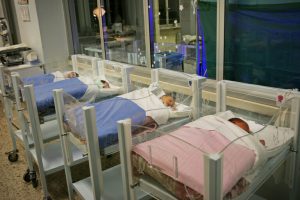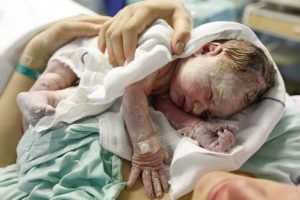At just one year old, Teddy faced a leukemia diagnosis with grim prospects. Doctors initially doubted his chances, but a miraculous turn of events granted him a new lease on life. Presently, medical experts project a 97 percent survival rate for the little boy, largely owing to something many parents typically discard without much thought.
Teddy’s mother, 37-year-old Sarah Cripps, experienced profound devastation upon learning about her 17-month-old son’s leukemia diagnosis. The discovery of swollen lumps on the back of Teddy’s head heightened Sarah’s fears, as she harbored a small suspicion of the potential diagnosis even then.

“I got really scared when I saw the lumps. My cousin passed away from leukemia when I was around 12, so I immediately went to the doctor to share my concerns,” Sarah recounted to Manchester Evening News. Despite the initial lack of concern from doctors regarding Teddy, Sarah, driven by her anxieties, sought a second opinion from another physician within a day. It was during this consultation that she learned something grave was affecting her son.
After taking a blood sample from Teddy, the doctor confirmed the legitimacy of Sarah’s worries – the one-year-old had acute myeloid leukemia, also recognized as blood cancer.

The young boy required chemotherapy and was urgently in need of a stem cell transplant. Sarah received the distressing news that there was only a 13 percent chance of Teddy surviving. “I was convinced Teddy’s twin brother, George, would be a match. But when I found out he wasn’t, it felt like another diagnosis. The ground gave way beneath me,” expressed Sarah.
The doctors reassured that there was a good chance of finding an alternative match for Teddy, and fortunately, they did. A donor was identified in Spain, and Teddy received life-saving blood from an 11-year-old boy. The donated blood came from the placenta that the boy’s mother chose to donate after his birth, containing valuable umbilical cord blood rich in stem cells.
The transplant proceeded smoothly, and Teddy regained a healthy life, consuming nutritious food and experiencing steady growth.

“For me, the key factors that saved Teddy’s life were early diagnosis, proper nutrition, and a stem cell transplant from umbilical cord blood,” Says Sarah.
At 3 years old, Teddy now holds a 97 percent chance of survival. Sarah makes a heartfelt appeal to all mothers, expressing gratitude to the Spanish woman who chose to donate her placenta after birth. She urges others to consider doing the same instead of letting midwives discard it.
“If I stood before a pregnant mother with my child and said, ‘My child’s survival depends on a stem cell transplant, and the best chance comes from your placenta that you’re planning to throw away – can I have it?’ I don’t believe any mother would refuse,” Sarah asserts. She adds, “You can’t fathom the emotions of learning there’s a way to save your child’s life, not through medicine you can purchase, but through the selfless act of someone who woke up one day and decided to give this gift.”